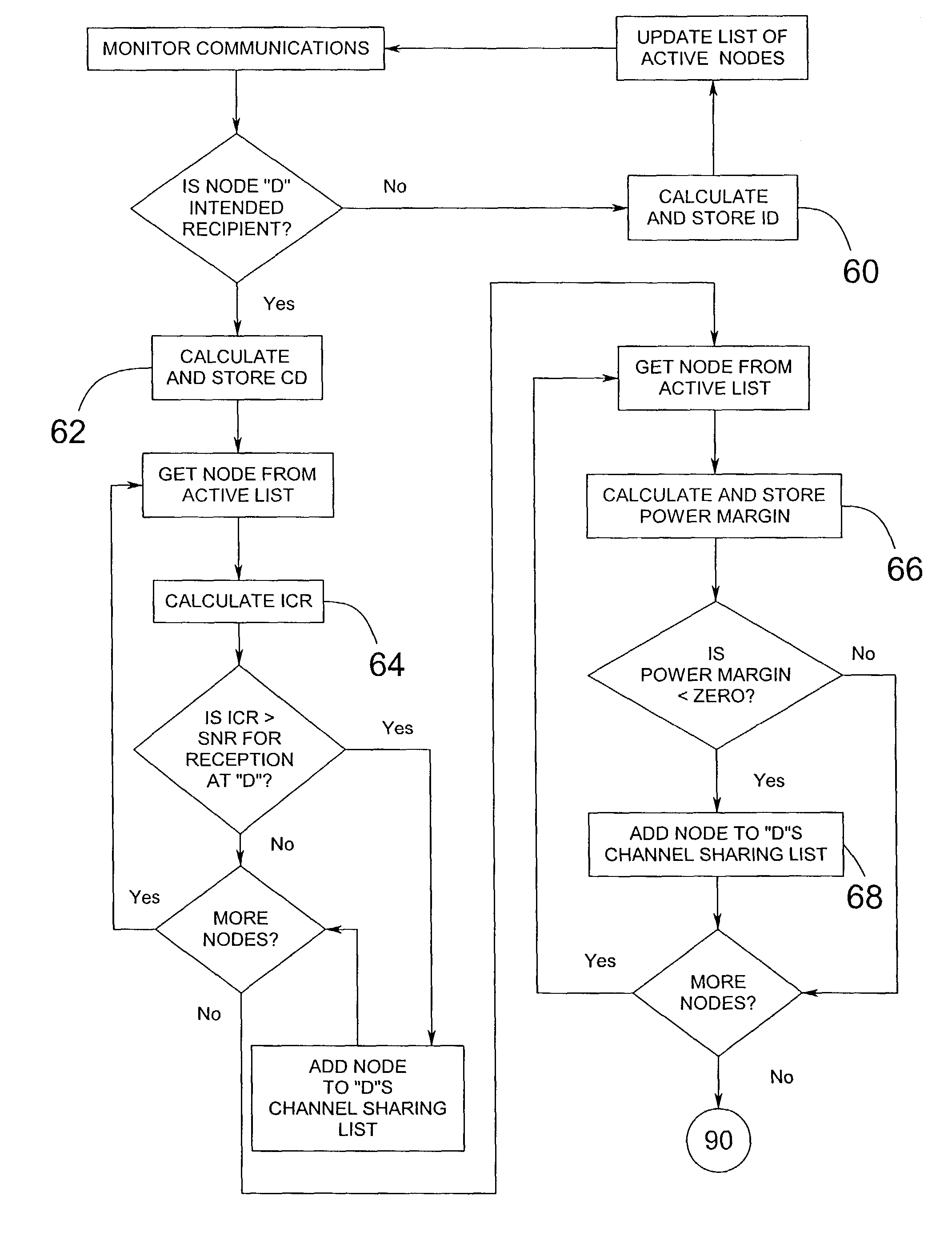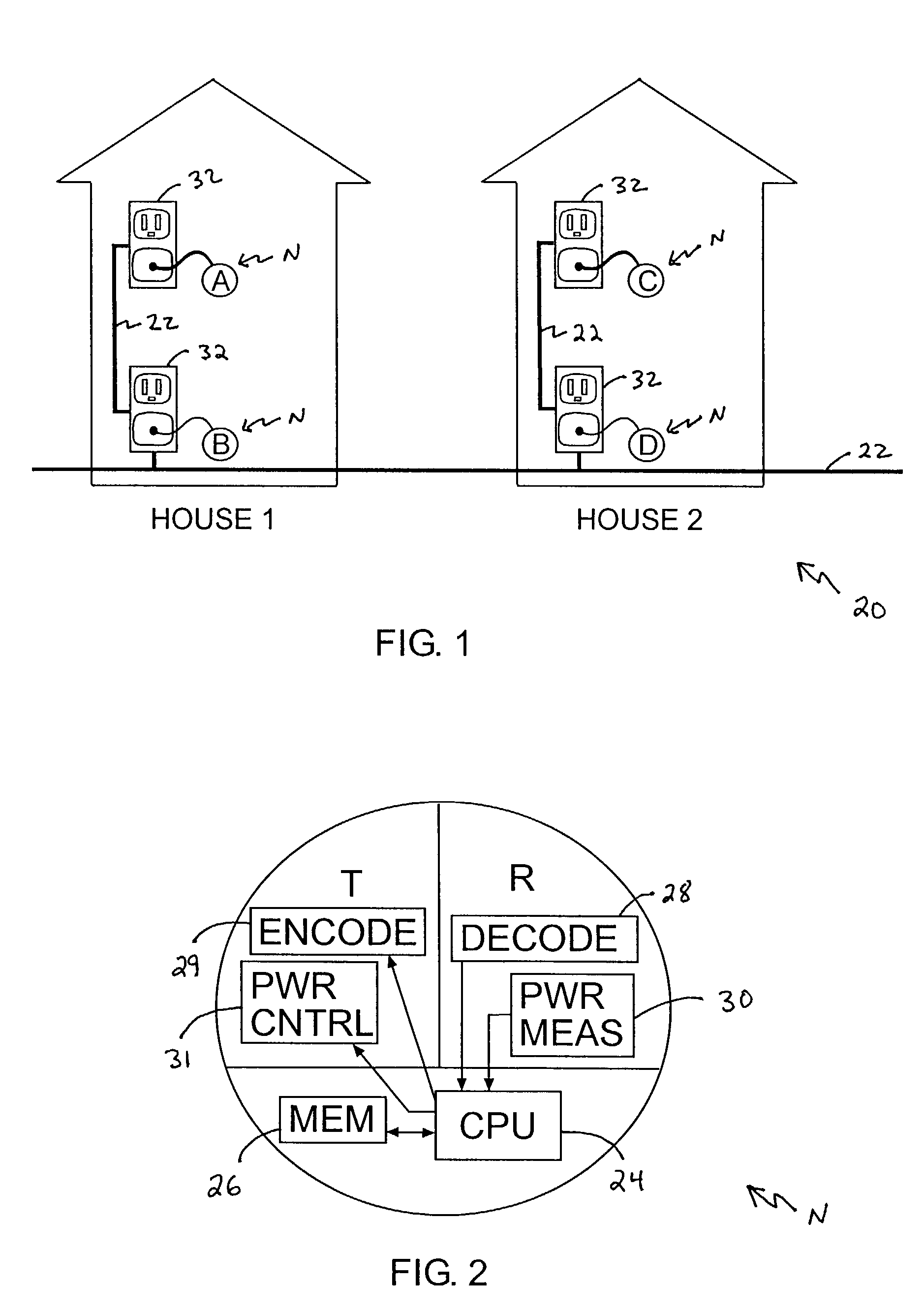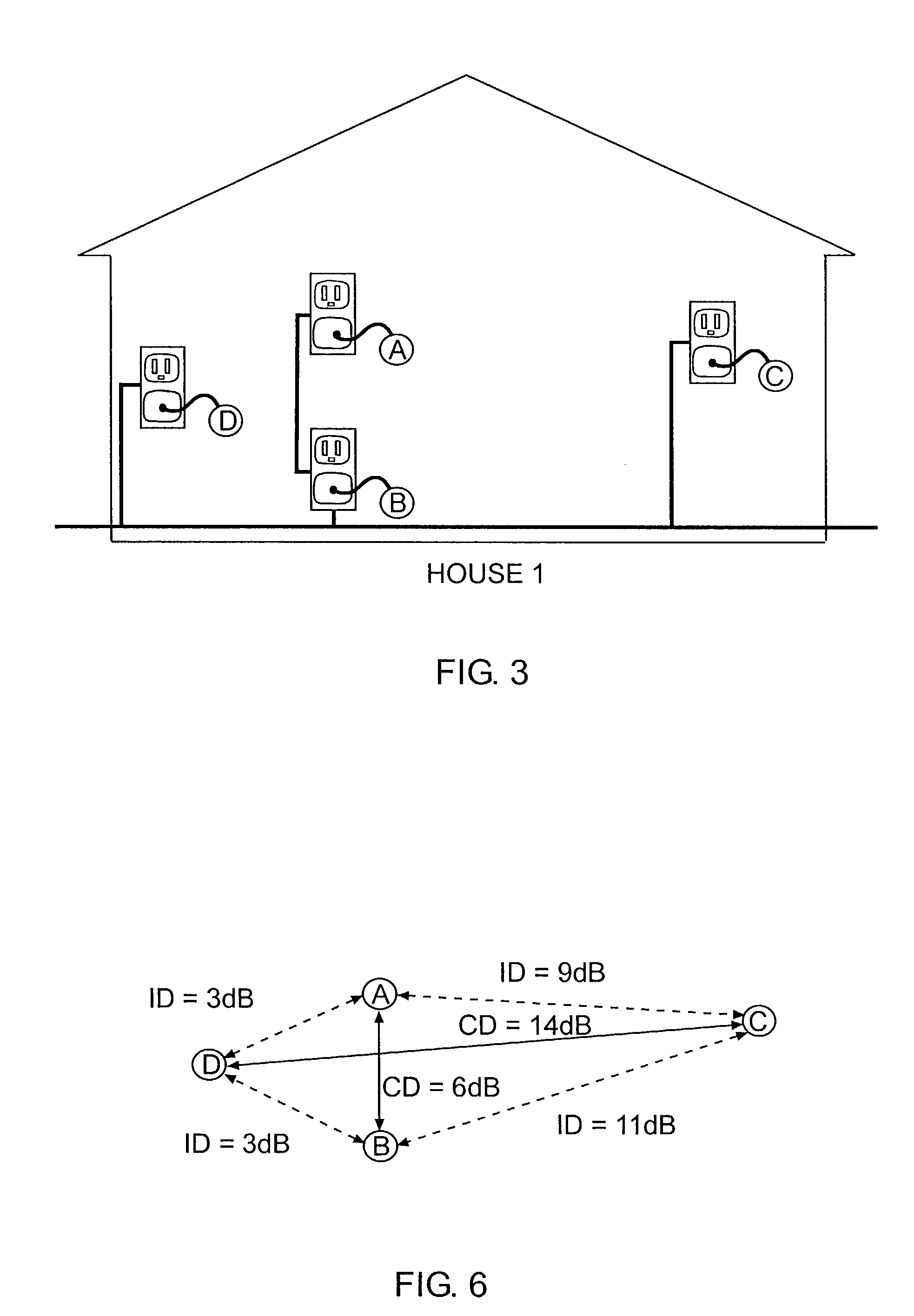Dynamically reconfigurable wired network
- Summary
- Abstract
- Description
- Claims
- Application Information
AI Technical Summary
Benefits of technology
Problems solved by technology
Method used
Image
Examples
Embodiment Construction
[0032]In a preferred embodiment of a dynamically reconfigurable network 20 according to the present invention, there are a plurality of nodes N that share the same frequency band or channel (“channel”). The nodes preferably communicate with one another over the medium of an AC power line 22, such as shown in FIG. 1, however, this is not essential to the invention.
Power Line Networks
[0033]In contrast to other wired communication networks, the primary purpose of a power line network is to deliver power. As such, power line networks are not optimized for the transmission of communication signals. Communication signals in power line networks experience significantly greater attenuation and signal distortion than is found in other wired communication networks. Wire nuts, switches, wall socket outlets and their appliance loads create impedance discontinuities. Impedance mismatches reduce and increase energy at various frequencies and are created every time an appliance is plugged in or re...
PUM
 Login to View More
Login to View More Abstract
Description
Claims
Application Information
 Login to View More
Login to View More - R&D
- Intellectual Property
- Life Sciences
- Materials
- Tech Scout
- Unparalleled Data Quality
- Higher Quality Content
- 60% Fewer Hallucinations
Browse by: Latest US Patents, China's latest patents, Technical Efficacy Thesaurus, Application Domain, Technology Topic, Popular Technical Reports.
© 2025 PatSnap. All rights reserved.Legal|Privacy policy|Modern Slavery Act Transparency Statement|Sitemap|About US| Contact US: help@patsnap.com



